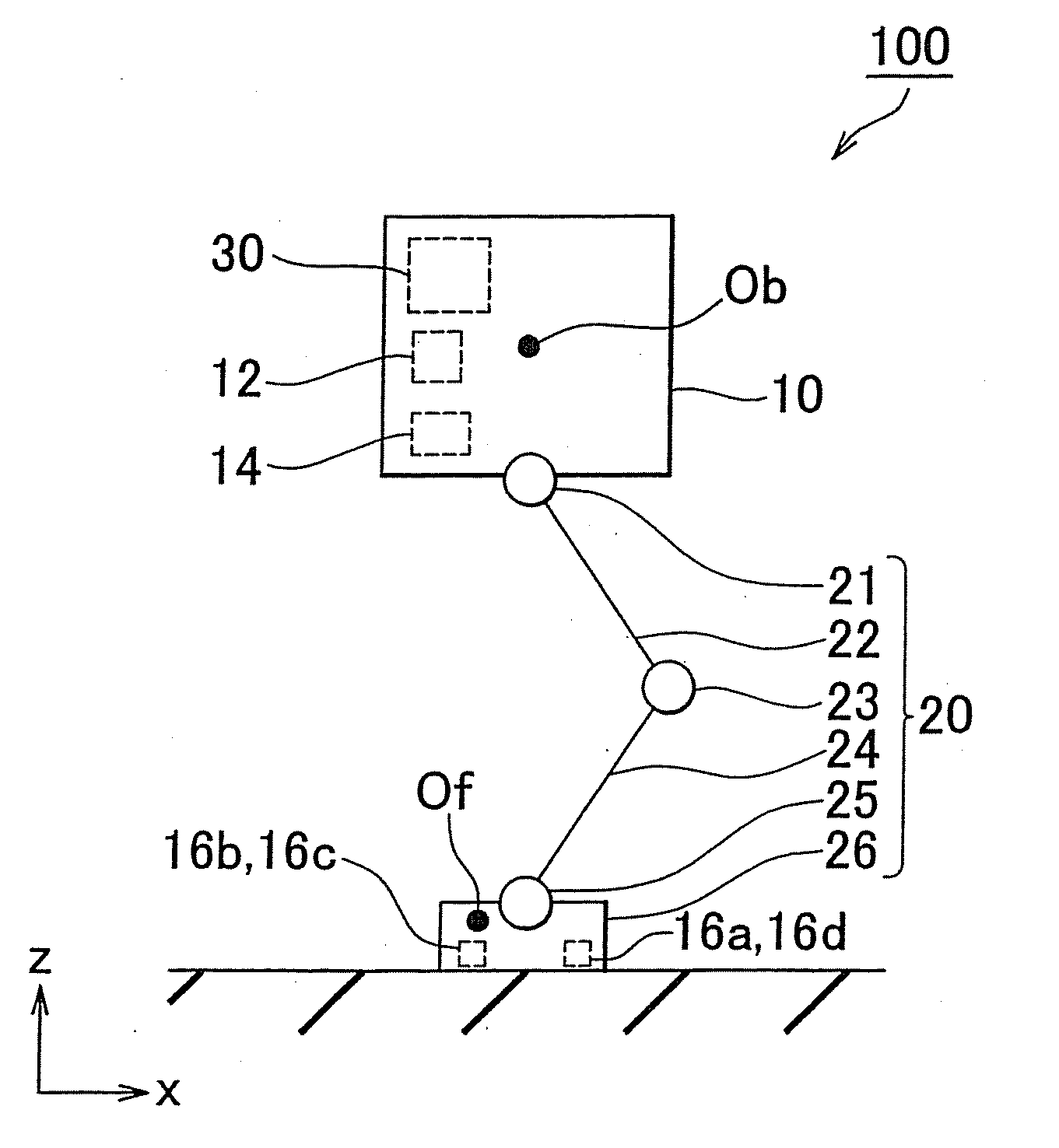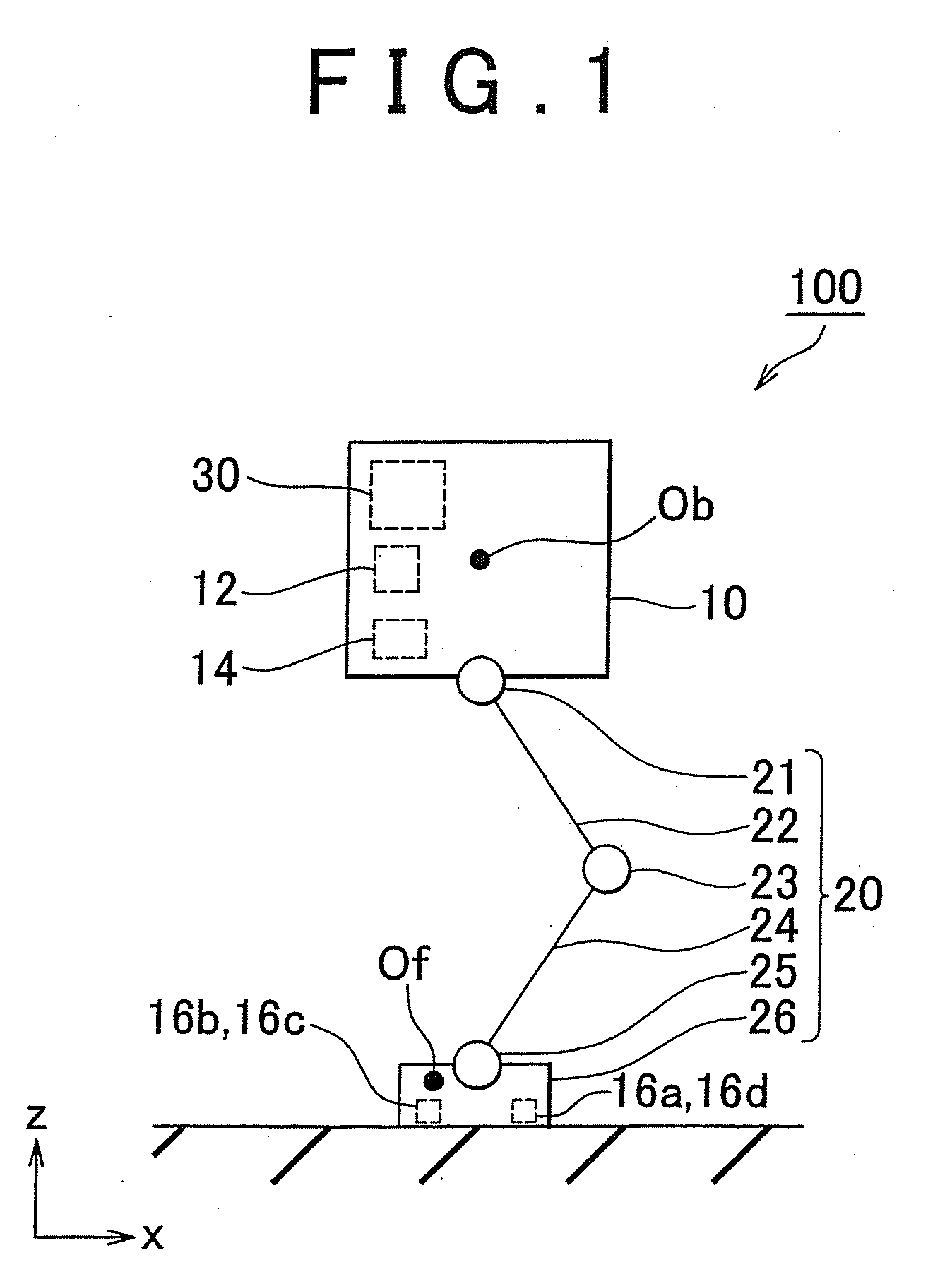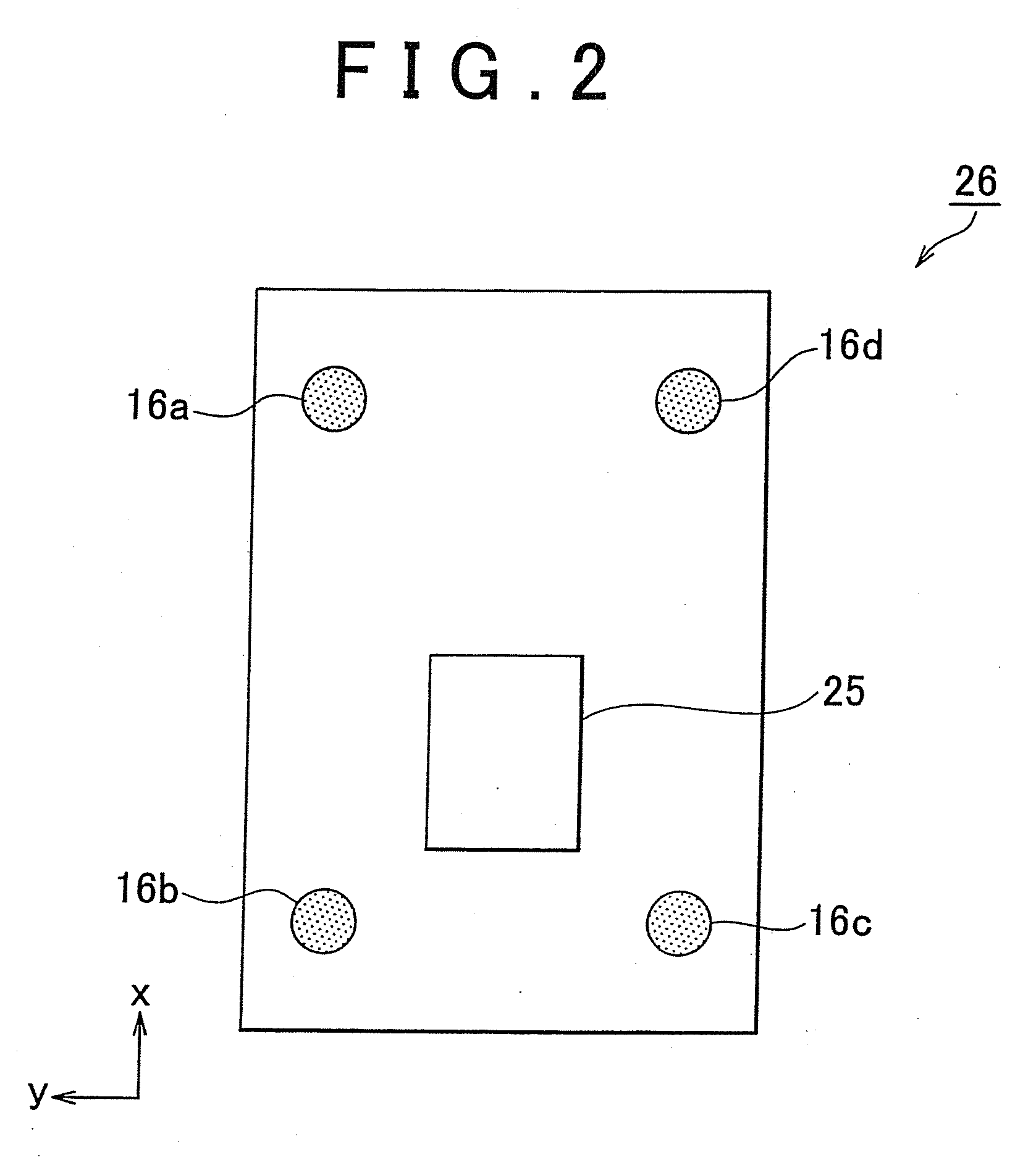Legged robot and control method of legged robot
a robot and control method technology, applied in the field of legged robots, can solve the problems of inaccurate detection of floor reaction force, increase in the number of triaxial force sensors that cannot be used to calculate floor reaction, and inability to accurately detect floor reaction force, so as to achieve the effect of obtaining the floor reaction force momen
- Summary
- Abstract
- Description
- Claims
- Application Information
AI Technical Summary
Benefits of technology
Problems solved by technology
Method used
Image
Examples
first embodiment
[0046]A legged robot includes a body, a leg portion connected to the body, a foot portion provided on a lower end of the leg portion, a falling direction detection unit that detects a falling direction of the body, a control unit that controls drive of a joint of the leg portion, and a distance detection unit that detects a distance between a sole of the foot portion and a road surface. Here, the distance detection unit includes at least three distance sensors provided on the sole of the foot portion. The control unit of the legged robot includes distance sensor selecting means for selecting a distance sensor, and gait data correcting means for correcting gait data based on a detection signal from the distance sensor selected by the distance sensor selecting means. The distance sensor selecting means selects three distance sensors from among the distance sensors based on a detection result from the falling direction detection unit.
[0047]When the walking robot walks on uneven ground...
second embodiment
[0096]FIG. 12 is a view illustrating the constitution of the foot link 26 on the robot 100 according to the The foot link 26 includes a toe portion 26a and a heel portion 26b connected to the toe portion 26a via a toe joint 27. By driving the toe joint 27 during a walking operation of the robot 100, the heel portion 26b can be raised while keeping the toe portion 26a in contact with the road surface. In other words, the robot 100 can be caused to stand upright by grounding only the toe portion 26a while the heel portion 26b is raised.
[0097]As shown in FIG. 12, the toe portion 26a and heel portion 26b take a substantially rectangular shape when seen from the upper surface. The four distance sensors 16a, 16b, 16c, 16d are provided respectively near the four corners of the toe portion 26a. Here, the two distance sensors 16a and 16d are provided on the toe side of the toe portion 26a, while the two distance sensors 16b and 16c are provided on the heel portion direction side. The distan...
PUM
 Login to View More
Login to View More Abstract
Description
Claims
Application Information
 Login to View More
Login to View More - R&D
- Intellectual Property
- Life Sciences
- Materials
- Tech Scout
- Unparalleled Data Quality
- Higher Quality Content
- 60% Fewer Hallucinations
Browse by: Latest US Patents, China's latest patents, Technical Efficacy Thesaurus, Application Domain, Technology Topic, Popular Technical Reports.
© 2025 PatSnap. All rights reserved.Legal|Privacy policy|Modern Slavery Act Transparency Statement|Sitemap|About US| Contact US: help@patsnap.com



